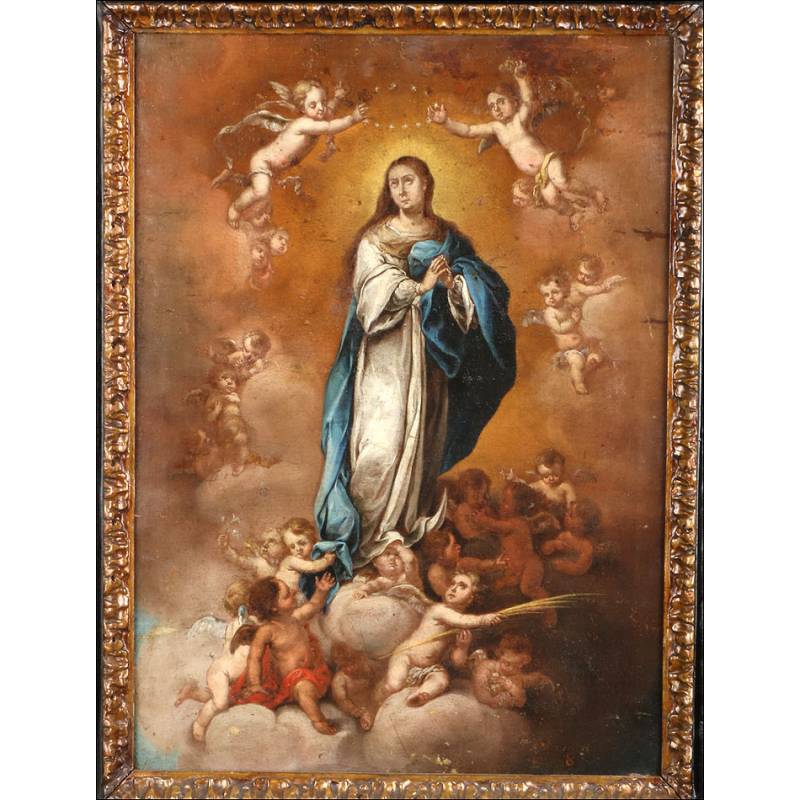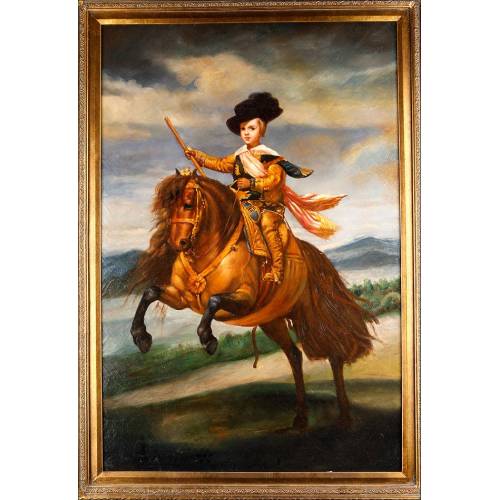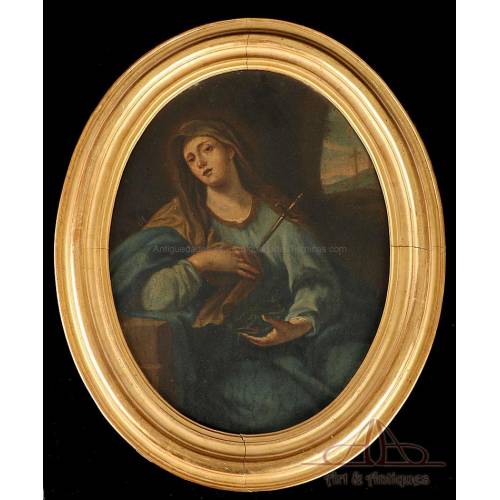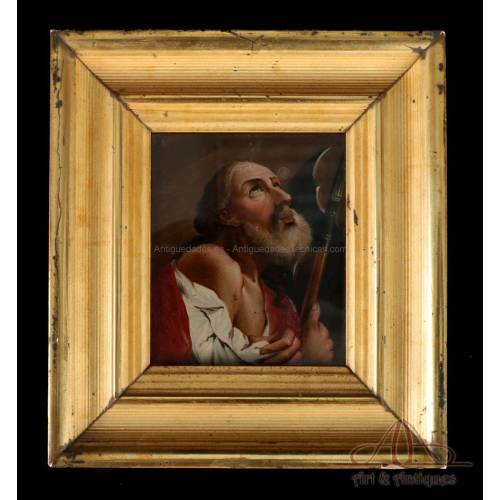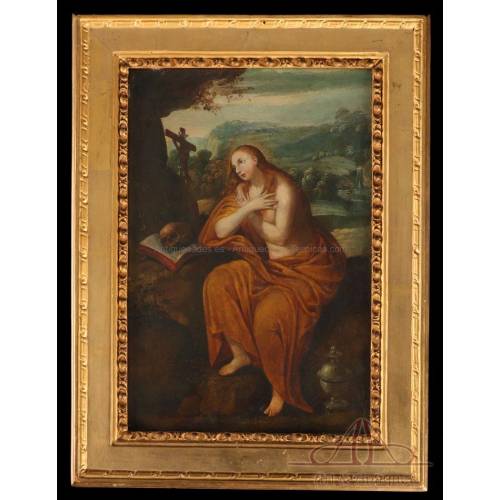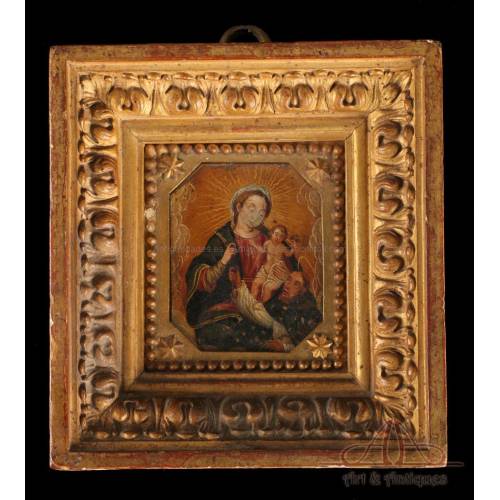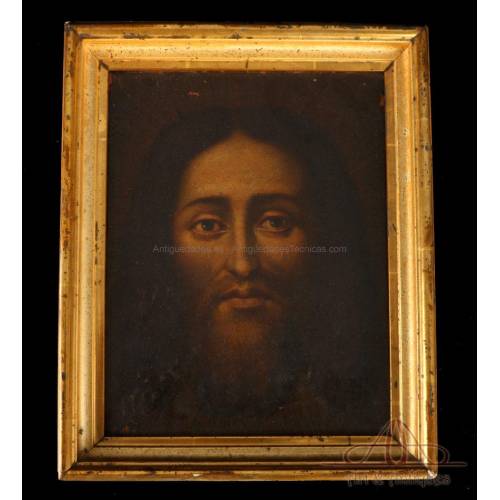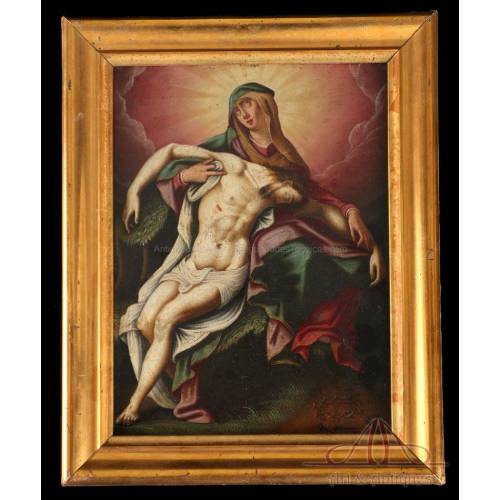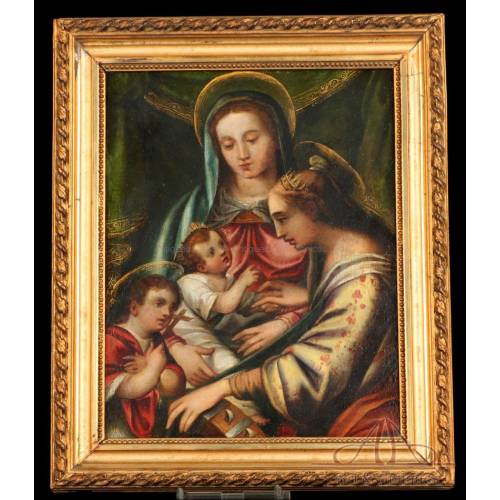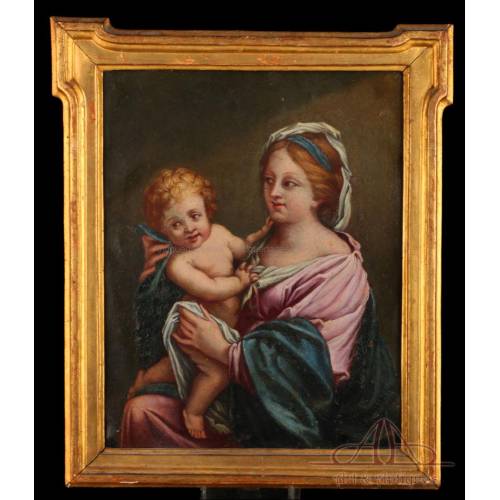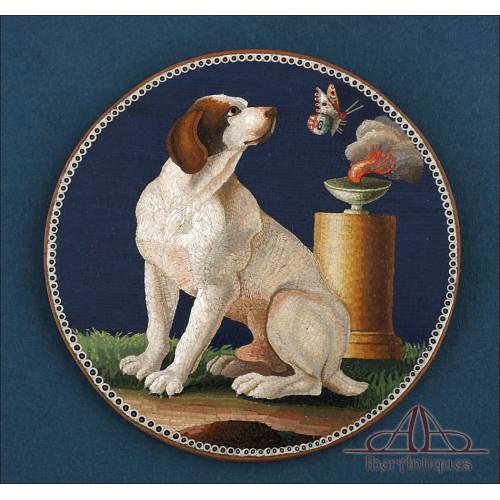C-308
Antique Painting 'The Immaculate Conception', S. XVIII
Magnificent oil painting "Immaculate Conception". Belonging to the Spanish school. Work of a follower of Murillo.
Sold!
Gorgeous antique oil painting, original from the time and painted by a follower of the baroque Spanish paint Bartolomé Esteban Murillo. The picture can be inscribed in the Spanish School of paint and was painted in the 18th century. This painting is a reproduction of The Immaculate Conception, painted by Murillo in 1670 and located in the Main Altar of the Oratory Church of San Felipe Neri (Cadiz, Spain). Nevertheless, it is not an exact copy: the artist modified some features subtly (the Virgins face, some colors) in order to create a unique and personal work of art. The painting is in wonderful condition, with no torn or restored parts and preserving the original canvas. The colors chosen by the artist look vibrant and delicate; the image of the Immaculate Conception stands out for the powerful blue robe and the golden halo that lightens her head. The figure is surrounded by cherubs or putti that can usually be found in Murillos pictures, who move graciously around the Virgin. The cherubs are painted with the delicate sfumato technique and emerge from the clouds in a subtle way just to enhance the image of the Immaculate. The canvas comes with a frame composed of a thin golden molding in the center and a sturdy black-lacquered frame outside. Antique, beautiful and original from the time, this oil on canvas depicting the Immaculate Conception is the perfect piece to preside an elegant and stylish dining room. Measurements: Canvas: Width: 44 cm. Height: 61 cm. Frame: Width: 63 cm. Height: 79 cm.B. E. Murillo BiographyBartolomé Esteban Murillo was a relevant Spanish painter, born in Seville in 1617 and dead in 1682. He is renowned for his religious paintings, especially for his pictures depicting Virgin Mary as the Immaculate Conception. He belonged to the Baroque School; his works show clearly his love for Italian and Flemish paintings. Though, Murillo knew how to adapt these currents to the Spanish taste and idiosyncrasy. He was a famous artist during his life and worked for the powerful Spanish church of the time, and founded a prestigious art school too. Today his paintings can be seen in collections and churches all over the world. His work had a remarkable influence over the painters that came after him, an influence that lasted until the 19th century.

